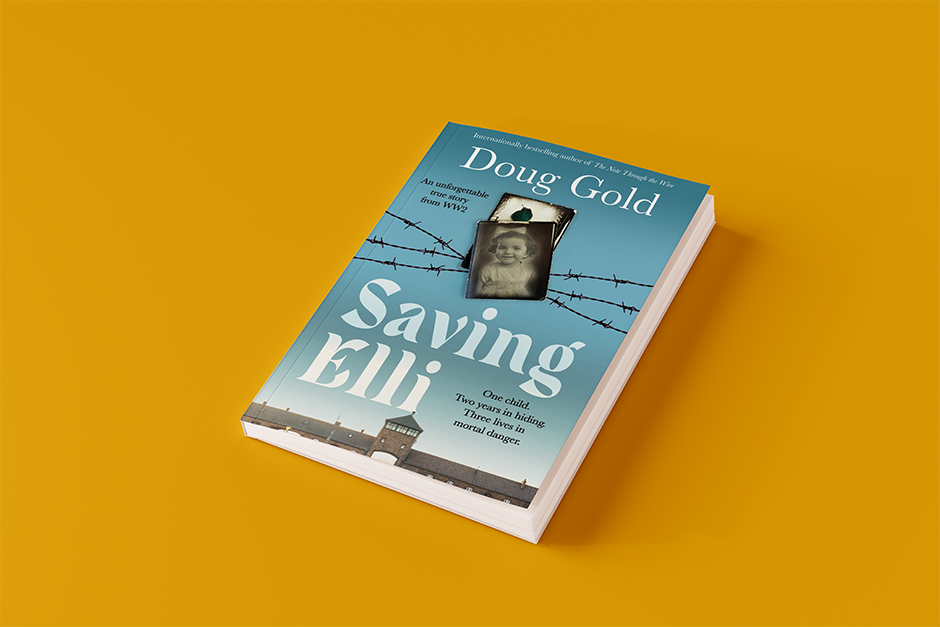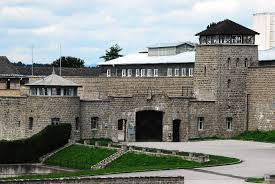Behind the Story: The Research Behind Saving Elli
- Allen & Unwin

- Aug 1
- 4 min read
Read an article written by Doug Gold on the research behind his book Saving Elli.

Saving Elli is based on the true story of a young Jewish girl hidden in Nazi-occupied Amsterdam and the courageous Dutch couple who risked everything to protect her.
To bring this powerful tale to life, author Doug Gold undertook an extraordinary research journey - drawing on family archives, survivor accounts, and visits to key sites including Amsterdam and the Mauthausen concentration camp.
In this piece, he reflects on the discoveries, the people, and the moments that shaped the story - and the responsibility of turning truth into fiction.
Saving Elli is based on the true story of resistance couple, Frits and Jo Hakkens, who hid a Jewish girl, Elli Szanowski, for almost two years in Amsterdam - a city crawling with Nazis. They faced betrayal, repeated raids, relentless surveillance and the constant risk of arrest. Elli’s father, Abraham, was executed at Mauthausen concentration camp; her mother, Gita, was forced to flee for her life.
While I’m a storyteller, not an historian, I found the research for this book totally absorbing. I spent countless hours delving into the conditions in Nazi-occupied Holland and the horrors of the concentration camps.
The first strands of the story came to me. Gloria Hakkens, Frits and Jo’s daughter-in-law, had already carried out an extraordinary amount of groundwork before I began writing, and her findings were instrumental in shaping the narrative. She had intended to write a family memoir and had gathered an impressive amount of material for that purpose.
Gloria’s husband, Marcel, shared his memories of his parents, which provided invaluable insight into their personalities and values. Those memories not only helped me portray them with greater depth and realism but also inspired many scenes in the book - especially his accounts of their resistance work, narrow escapes and brushes with the Nazi authorities.
Then there was the research Elli herself had done. While she was too young to recall her time with Frits and Jo, she later uncovered much about her parents’ ordeals, which helped shed light on their story.
While the full extent of Abraham’s suffering at Mauthausen will never be known, records confirm that he worked in the notorious granite quarry. To bring his ordeal to life, I drew on historical accounts and testimonies from the few who did survive the camp’s horrific conditions. It is certain that Abraham endured the same cruelty, deprivation, and inhumane treatment.

Written after the war, Gita’s own brief summary of her harrowing journey through Belgium and France to reach safety in Switzerland also filled in some gaps.
To complement these personal accounts, I travelled to both Amsterdam and Mauthausen.

In Amsterdam, I explored the city with the help of a very knowledgeable historian who guided me through the places where the events occurred. As he pointed out the sites connected to this story, the past felt very present. I stood outside Tidorestraat 66, where Frits and Jo once lived - now replaced by a characterless 1970s apartment block – and visited Eerste van Swindenstraat 3, the former site of Abraham’s tailor shop. I spent hours at the newly renovated Resistance Museum, the Holocaust Museum, and the Jewish Museum. At the Hollandsche Schouwburg theatre, where Jews were once processed before deportation, I found Abraham’s name etched into the memorial wall. His name also appeared at the new Holocaust Names Monument, one of 102,000 named concentration camp victims.
Mauthausen left a lasting impression on me. I’ve visited other concentration camps — Dachau, Auschwitz, among others — but Mauthausen was the most haunting of all. Standing at the foot of the 200 steep steps up the appropriately named Stairs of Death and imagining Abraham - exhausted and starving, climbing again and again with massive slabs of granite - brought me to tears. Few would manage it once - he did it for 12 hours a day, every day.

Alongside personal stories and visits, I immersed myself in written accounts – dozens of books – about the Dutch resistance; about Nazi collaborators; about Jewish fugitives; about escape routes from Holland; about betrayal, about Mauthausen; about everything to do with the Nazi occupation and the atrocious conditions in concentration camps.
But war is not all brutality and oppression, so I also found out as much as I could about the daily existence of ordinary people during the Nazi occupation. To offset the savagery, I’ve tried to portray what everyday life must have been like for people like Frits and Jo. While they may not have personally encountered every situation I’ve described, the events are representative of the dangers and choices – and occasional moments of normalcy and joy – that defined life for many like them during the war.
Exploring the truth behind this story was almost as rewarding as writing it. I can only hope booklovers enjoy reading it.
*
Saving Elli is a tribute to quiet heroism and the resilience of the human spirit. If this glimpse into the story behind the story has moved you, we hope you’ll read the book and discover the full journey for yourself.

Saving Elli
by Doug Gold
A gripping true story of sacrifice, sabotage, survival and impossible choices, in the darkest days of war.








Comments